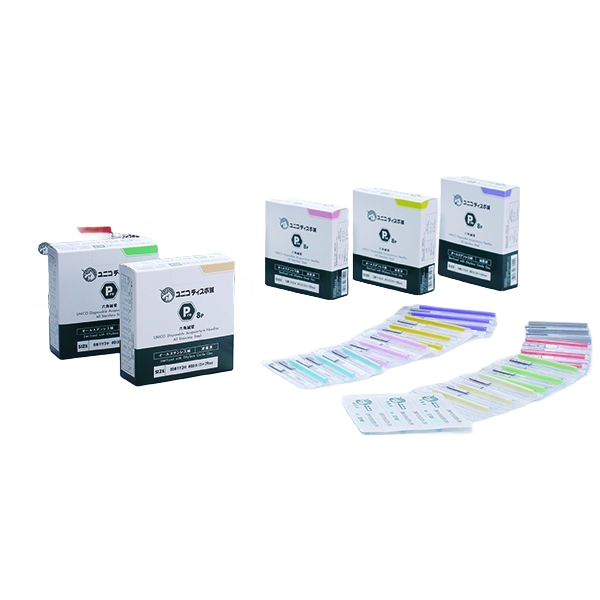
The basic structure of all acupuncture needles is the same: there is a sharp tip, a shaft, and a handle. Most needles are made of stainless steel, but other metals are also used. We can all agree on this fundamental design. However, beyond that, there are many differences, such as the various designs.
Here’s an interesting historical anecdote: A few hundred years ago, during Japan’s Edo period, there were many acupuncture training schools, and each one was required to have its own unique needle design. Patients could recognize where a practitioner’s sensei came from just by looking at the needles used in their clinic.
If someone wanted to establish their own school, they had to create an entirely new needle style and develop completely new needle techniques. They couldn’t simply “borrow” techniques from their own training.
Years ago, during one of his teaching visits to the U.S., Masakazu Ikeda, a renowned Japanese scholar and acupuncturist, introduced us to the Unico needle brand. A company in California then began importing them. Now, Blue Poppy (and therefore BIOS) has been granted this honor, and we are pleased to offer these outstanding needles.
It has been about ten years since I first used a Unico needle, and I was immediately impressed. They felt completely different in my hands! In my opinion, the most important aspect of Unicos is their unique weighting. Most needles from other companies are more spike-like, meaning the needle body has little flexibility. A Unico needle, on the other hand, is more willow-like—or, to use an analogy from Asian traditions, more bamboo-like.
The difference is not subtle. For practitioners accustomed to spike-like needles, it takes some time to recognize the increased flexibility of Unicos as an advantage.
What is the benefit? You can better perceive subtle changes in the patient through the needle—something that is clinically crucial.
Another noteworthy factor is that Unicos are uncoated needles, yet their insertion feels so smooth that you might think they are coated—but they are not. Most needles coated with a silicone mixture have it only on the tip, but even this small amount can cause skin reactions in a tiny percentage of patients. I have observed this during my 25-year career.
Beyond the needles themselves, the Unico guide tubes are truly special. Some acupuncturists may think this is not a big deal, but I disagree. The Unico guide tubes are so well-designed that they feel like a treatment tool in their own right. The edge that touches the patient is nicely beveled, making contact comfortable even when applying strong pressure—something required in certain techniques. Some competing brands have tubes with sharper edges, which can be uncomfortable for patients when additional pressure is applied.
I invite you to try Unico needles. I believe you will find that they stand apart from their competitors.
Sincerely,
Bob Quinn
